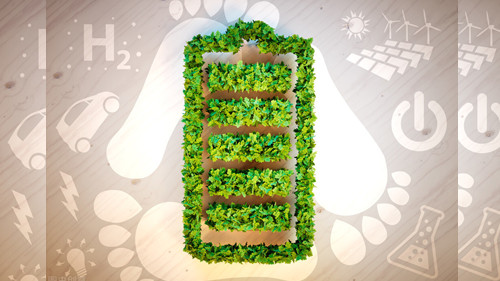Realizing the hydrogen economy
Realizing the hydrogen economy – Coating Catalysts – Cheersonic
Although less efficient than electric batteries, today’s hydrogen fuel cells compare favorably with internal combustion engine technology, which converts fuel into kinetic energy at roughly 25 per cent efficiency. A fuel cell, by contrast, can mix hydrogen with air to produce electricity at up to 60 per cent efficiency.

A fuel cell works much like an electric battery, converting chemical energy into electrical energy using the movement of charged hydrogen ions across an electrolyte membrane to generate current. There they recombine with oxygen to produce water – a fuel cell’s only emission, alongside hot air.
Although less efficient than electric batteries, today’s fuel cells compare favorably with internal combustion engine technology, which converts fuel into kinetic energy at roughly 25 per cent efficiency. A fuel cell, by contrast, can mix hydrogen with air to produce electricity at up to 60 per cent efficiency.
FCEVs also present relatively low barriers to entry in terms of societal changes, as they operate and perform similarly to conventional vehicles, refueling at stations in minutes and driving for 500 to 600 kilometers on a single tank, all with no harmful emissions.
The hydrogen fuel itself can be produced with ever-increasing cost-effectiveness through electrolysis, by splitting water into its constituent hydrogen and oxygen atoms. This generates two useful gases and, when powered by green energy, makes hydrogen production a carbon-neutral act.
At present, however, just 2 per cent of the 600 billion cubic meters of hydrogen manufactured each year around the world is produced by water electrolysis, while 98 per cent is produced from natural gas, with carbon dioxide as a by-product.
More than 90 per cent of this hydrogen is used as a building block for fertilizers or is consumed within the oil, refining and wider petrochemicals industry.
The development of the hydrogen economy, therefore, relies on government investment in the initial phases. Investment in both hydrogen production and distribution infrastructure is needed, alongside the renewable power projects required to supply carbon-neutral energy.
For the moment, the scarcity of such infrastructure represents the single largest obstacle to the adoption of hydrogen technology.
Globally, the cost of hydrogen is already coming down, partly in line with the fall in the cost of renewable energy, but also due to improvements in water electrolysis and hydrogen fuel cell technology.
The Paris-based International Energy Agency expects the cost of producing hydrogen to fall by a further 30 per cent by 2030, but the rapid reduction in the cost of recent photovoltaic solar energy projects in the Middle East could mean the local cost of commercially producing hydrogen will fall even faster.
As investment in hydrogen infrastructure grows and net costs continue to fall, the hydrogen economy could prove to be an indispensable tool in the transition away from hydrocarbons.
